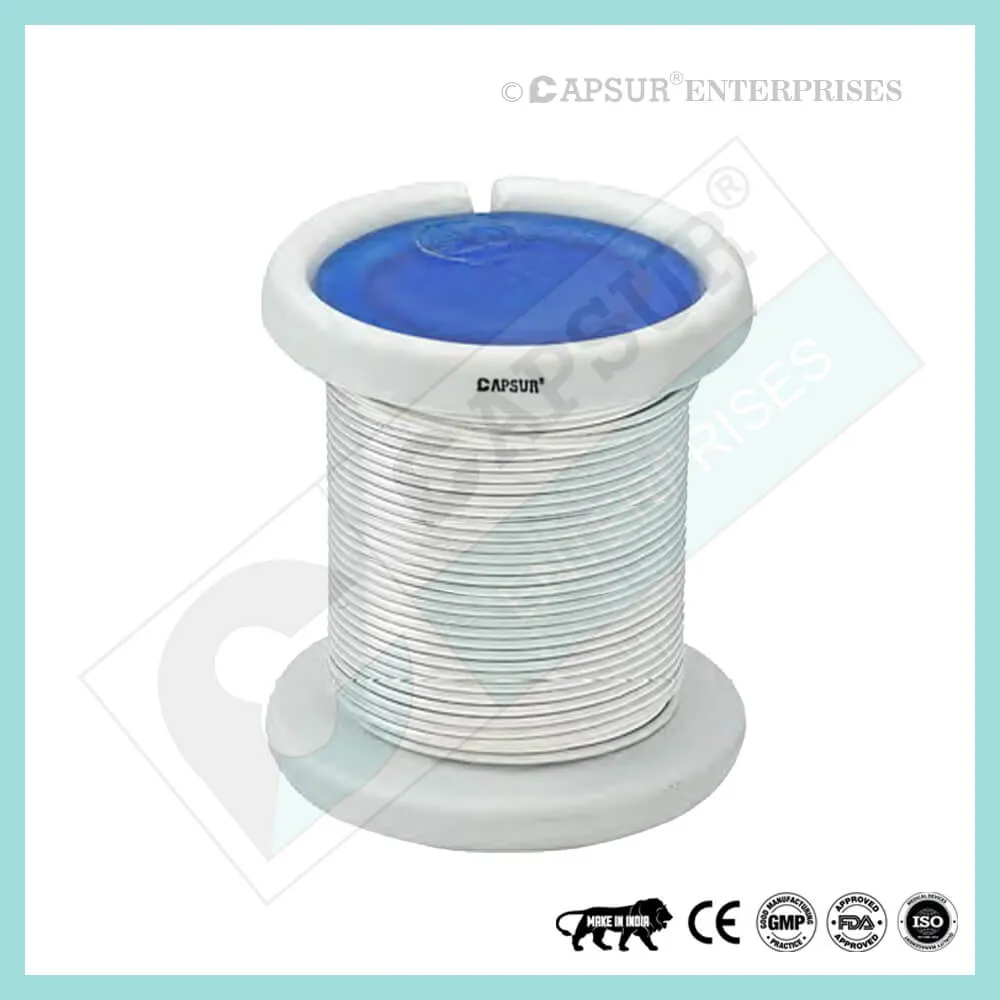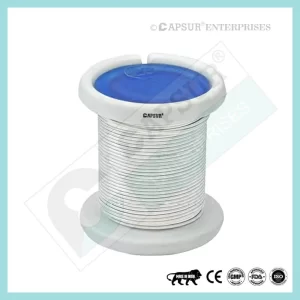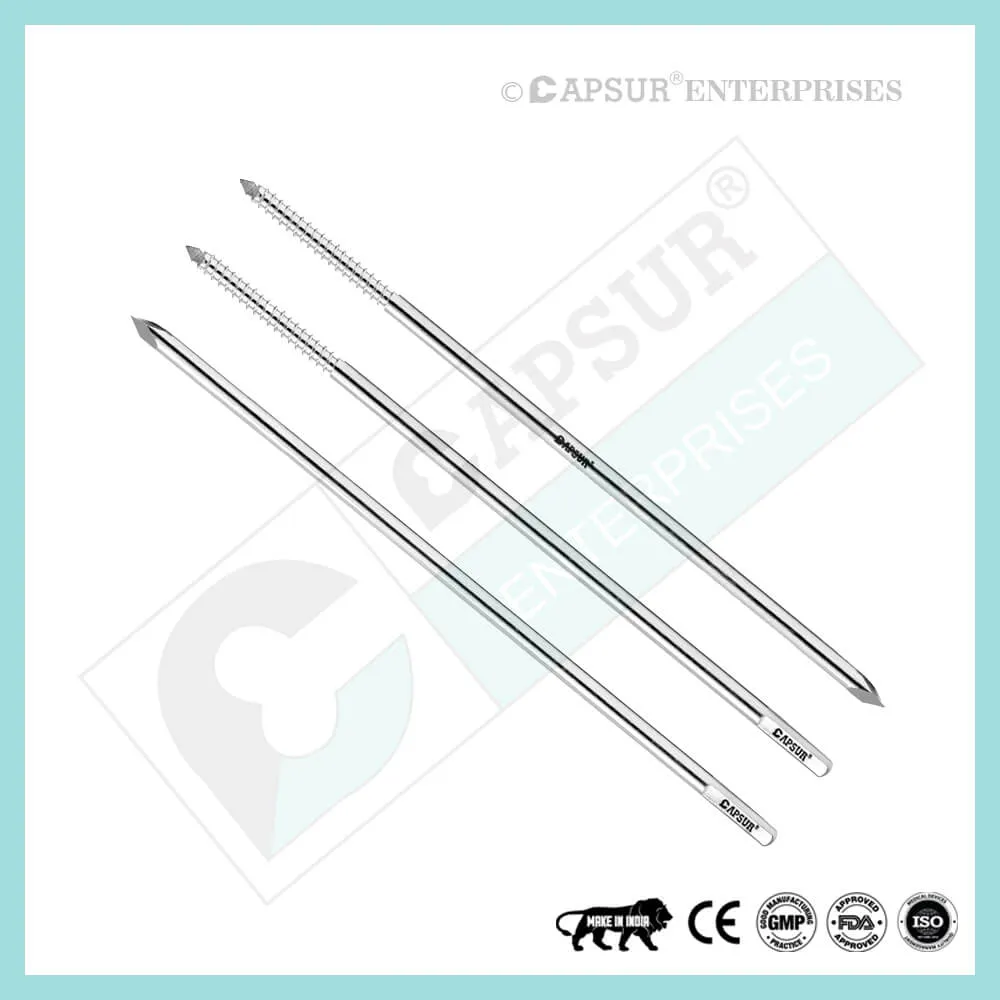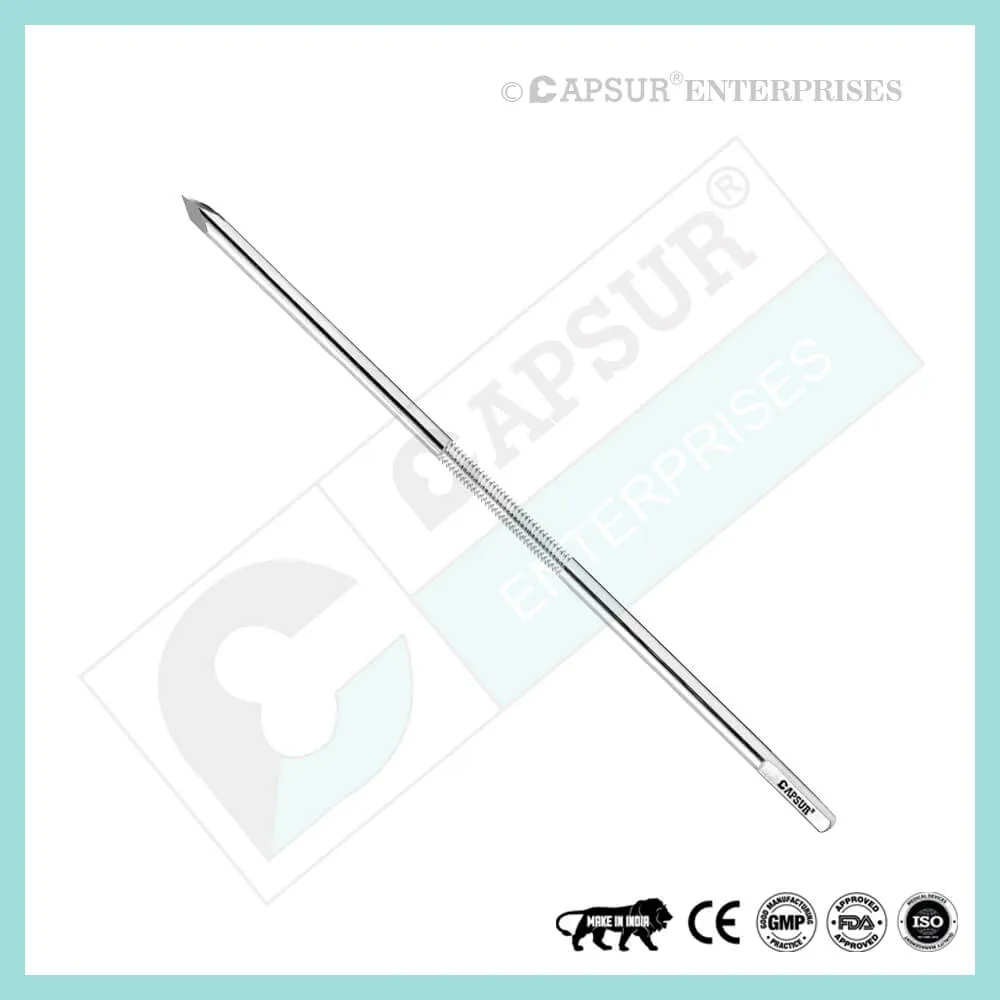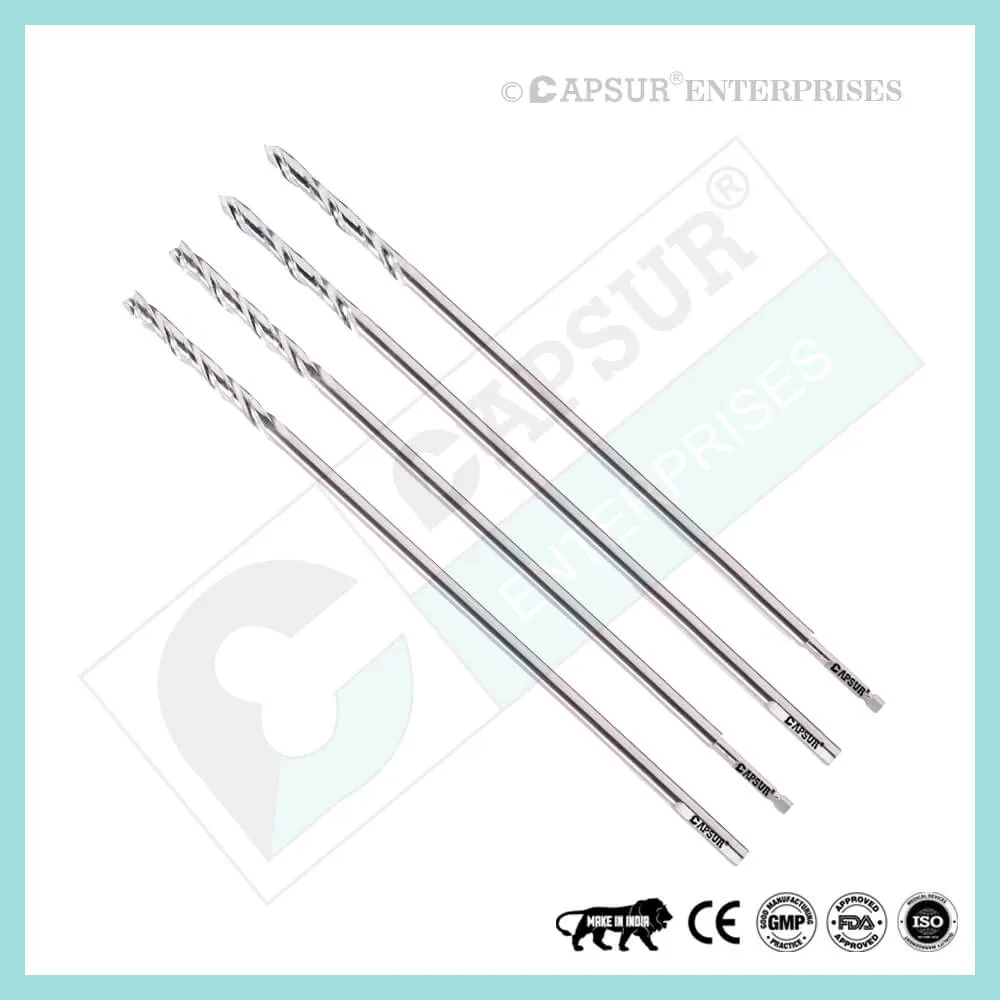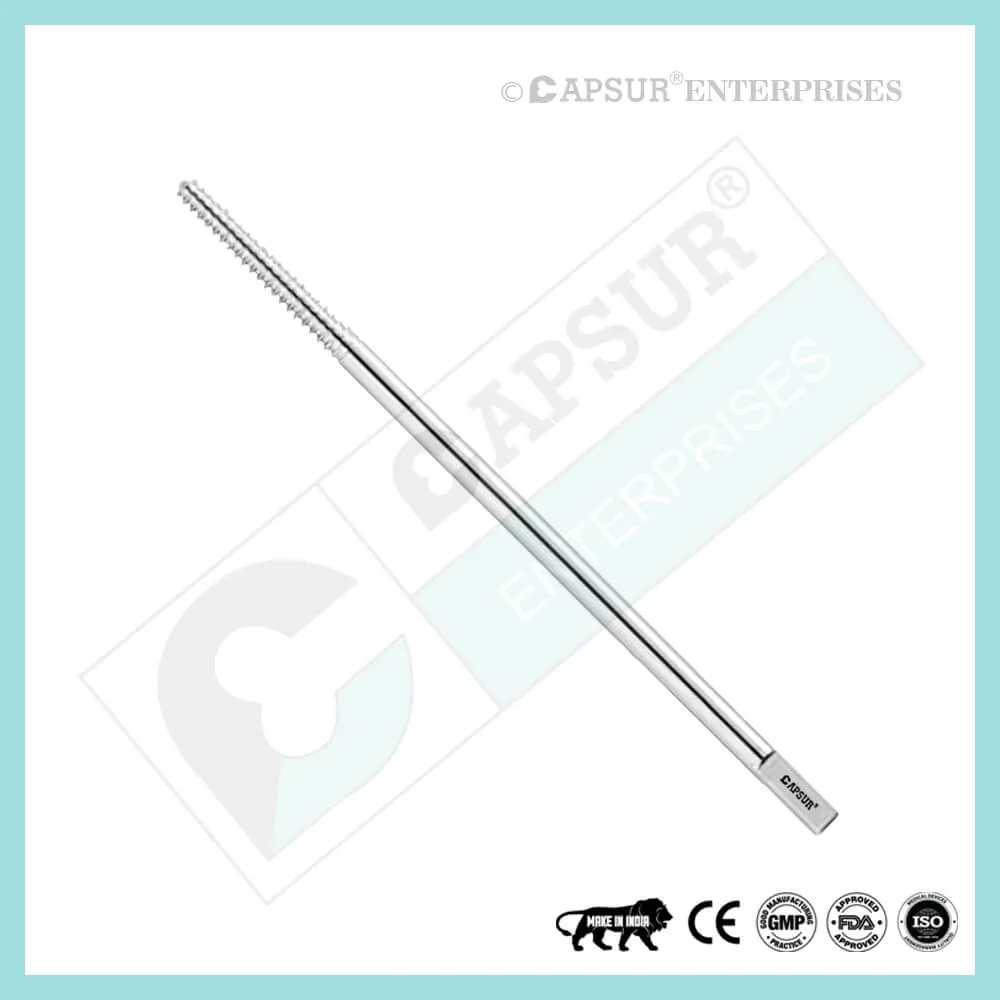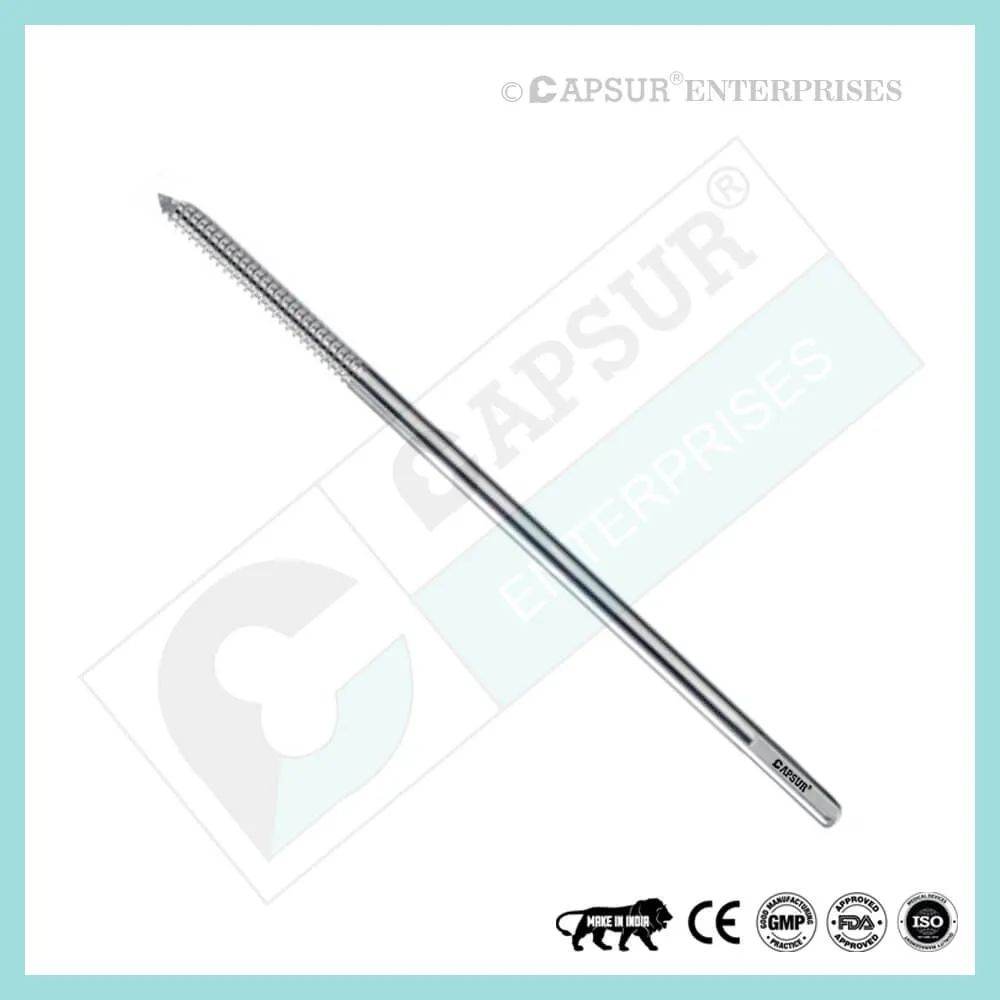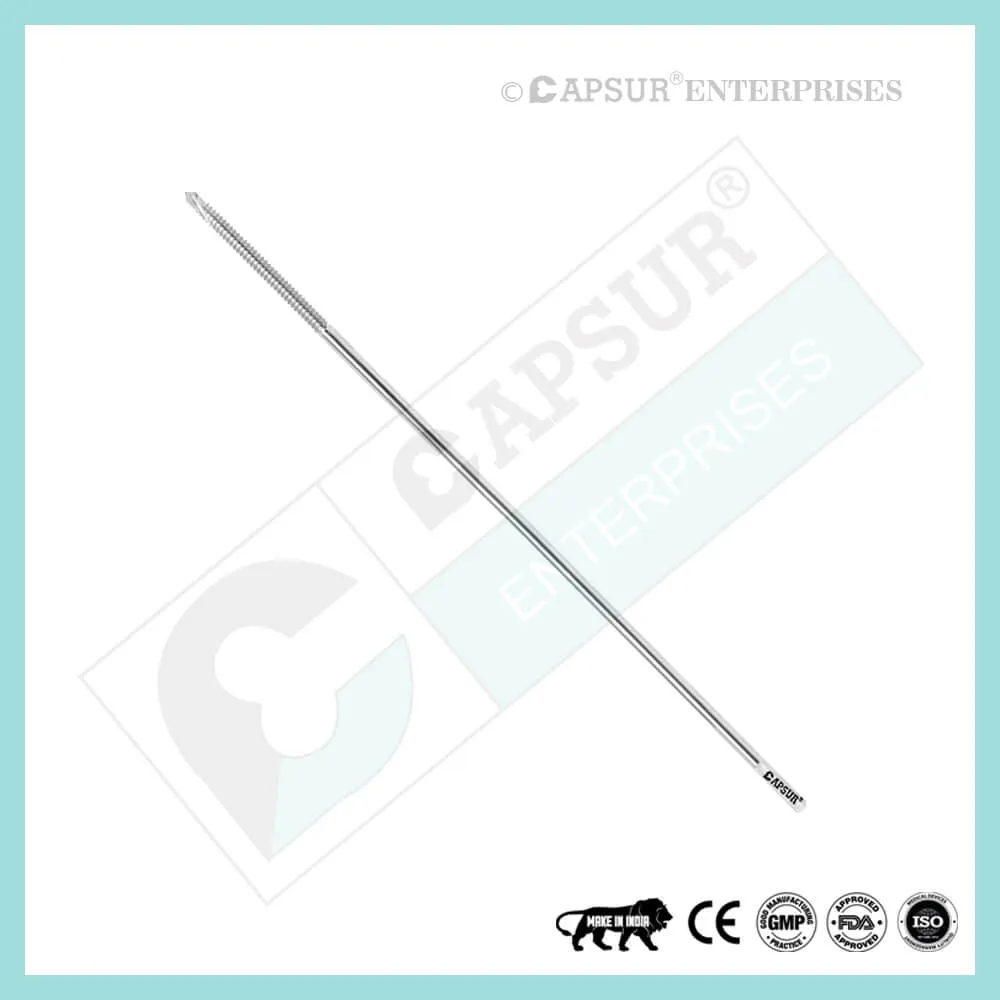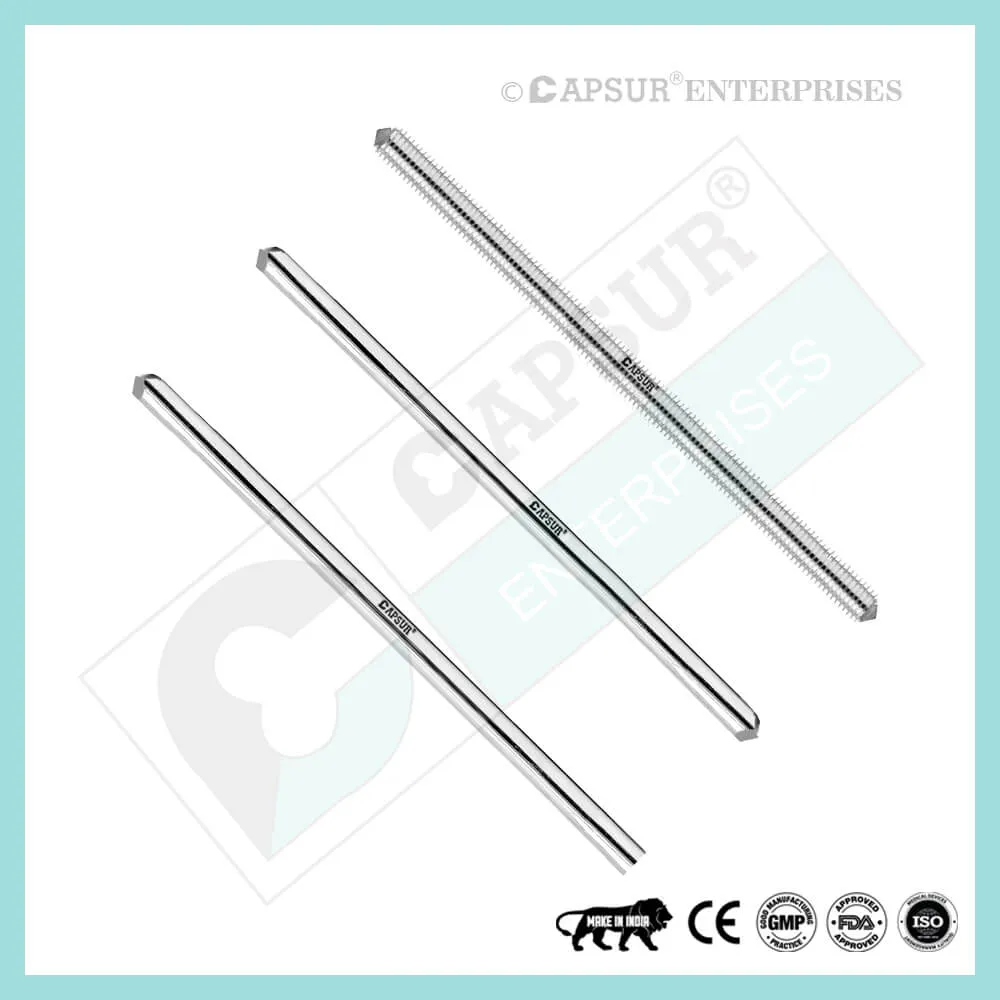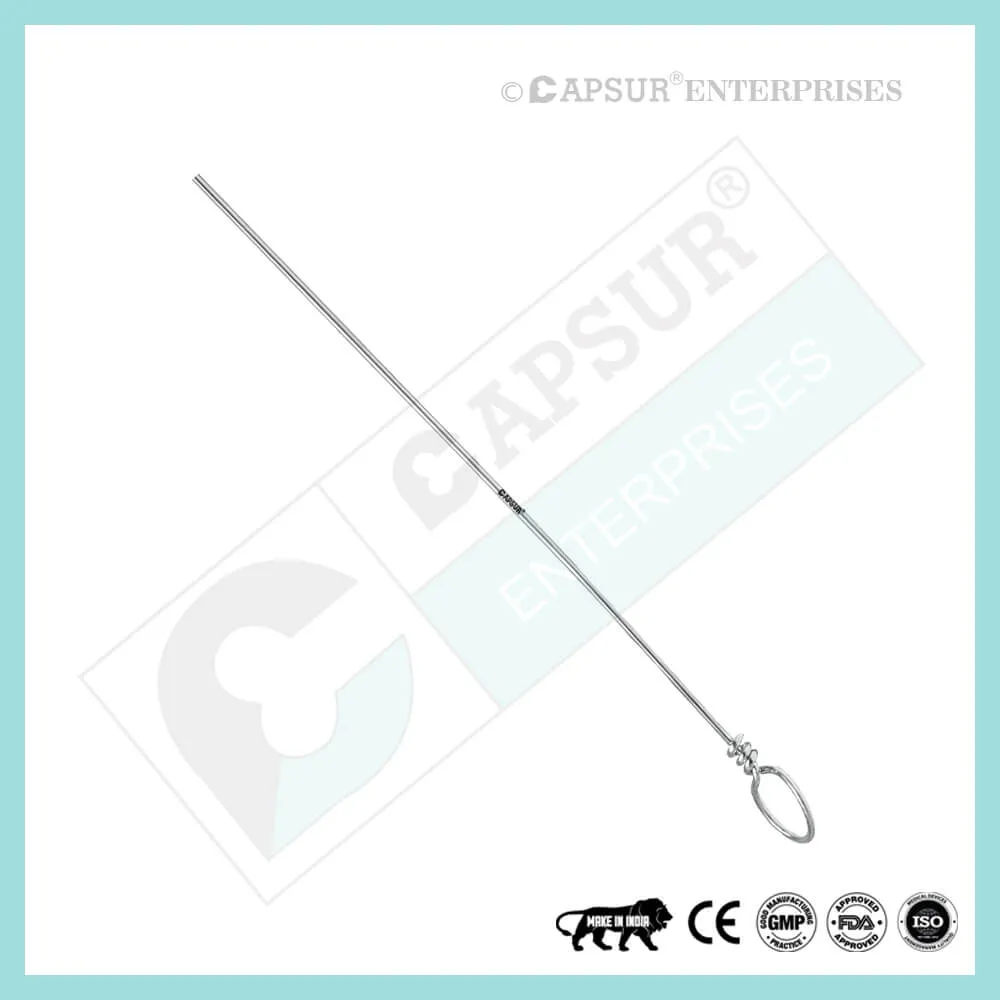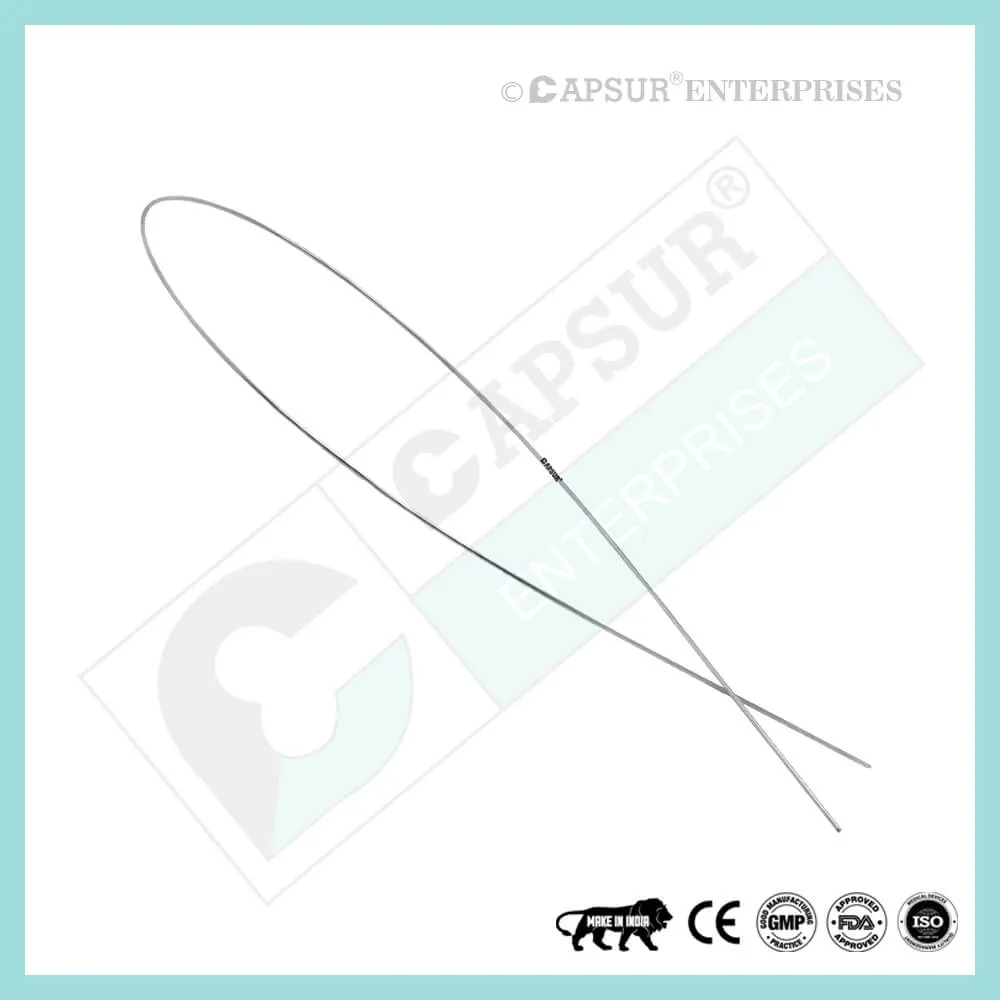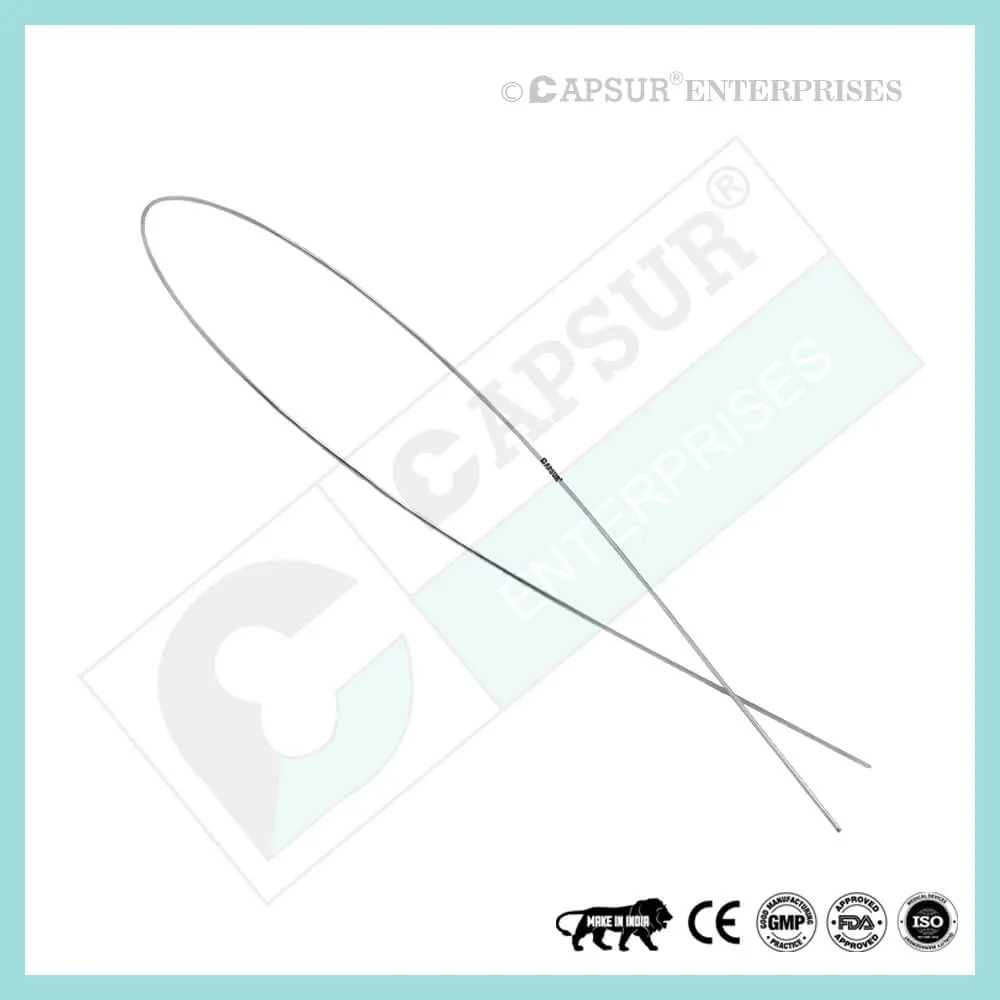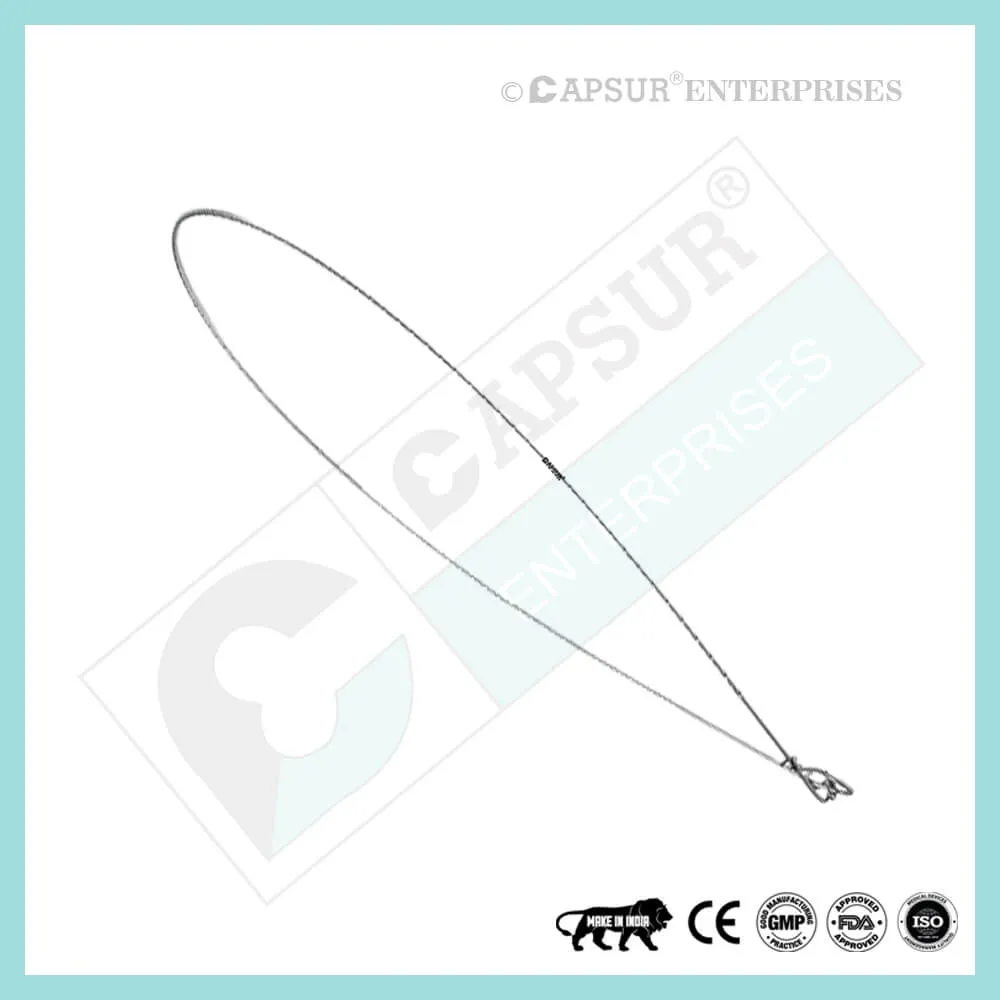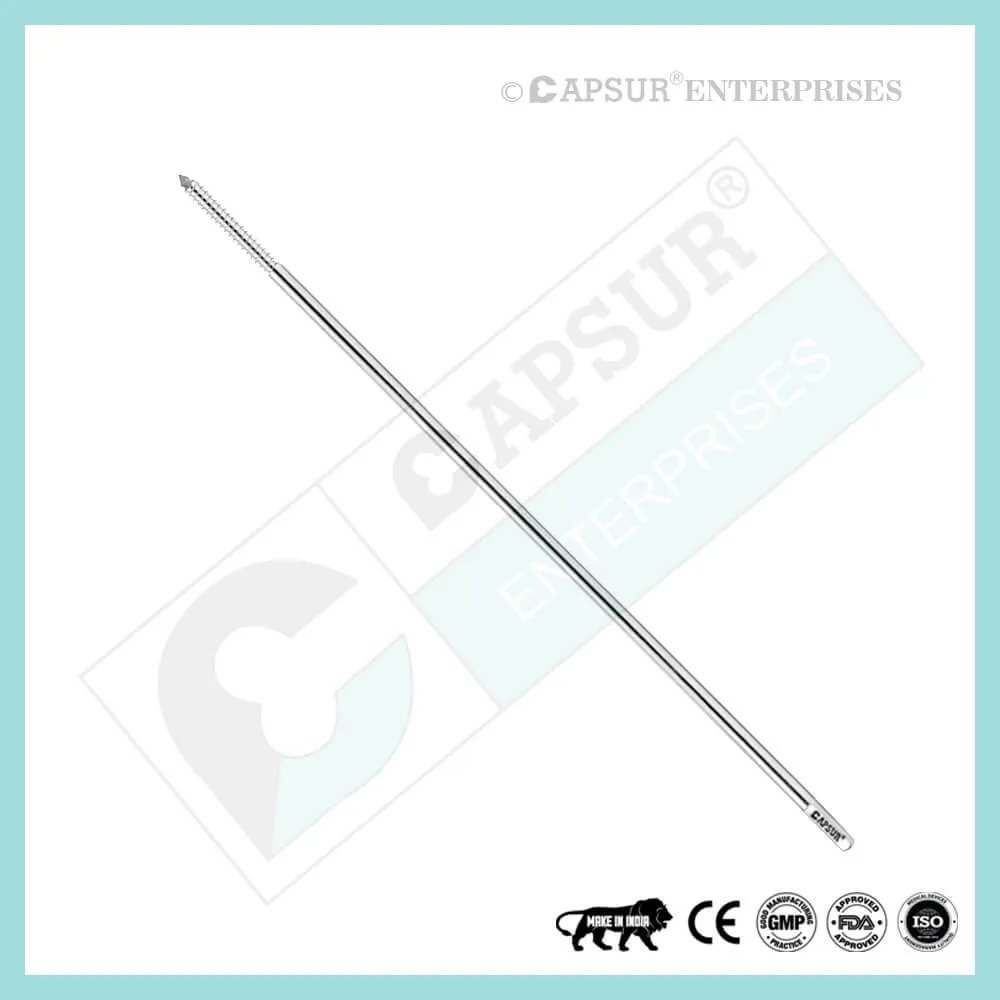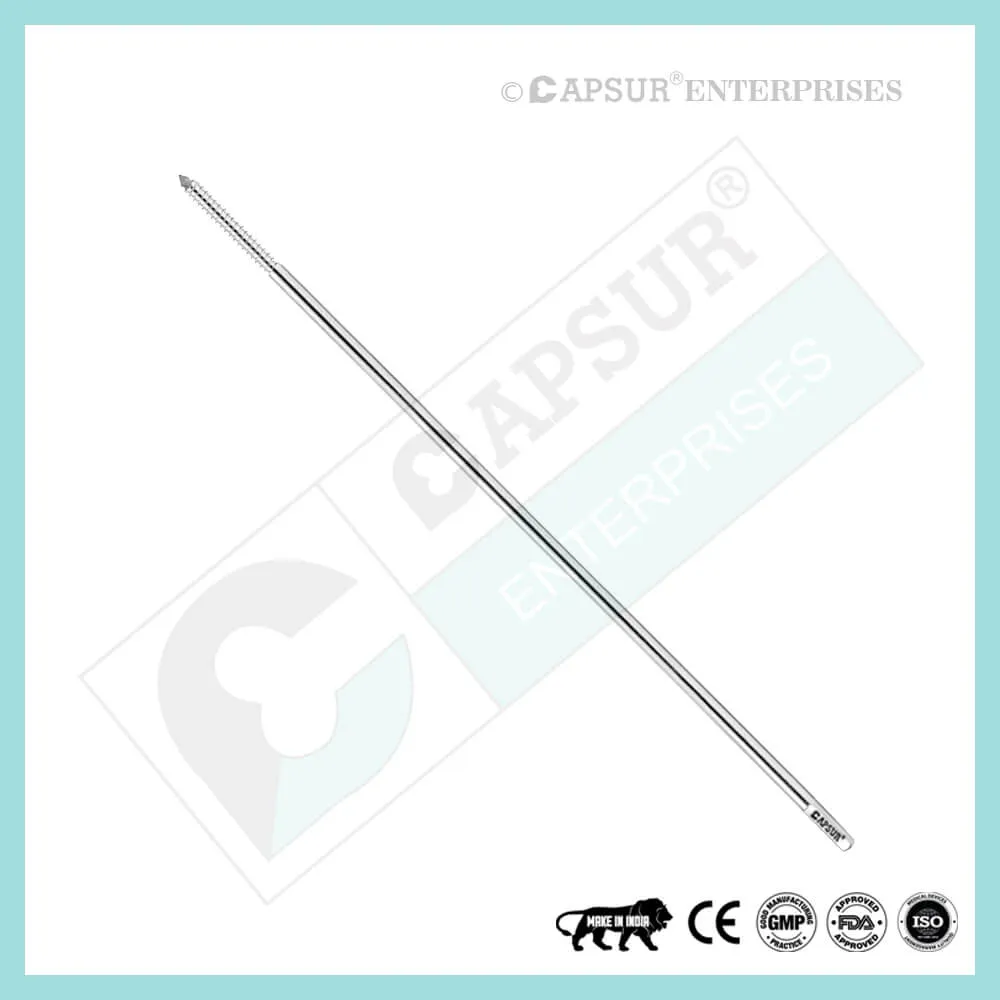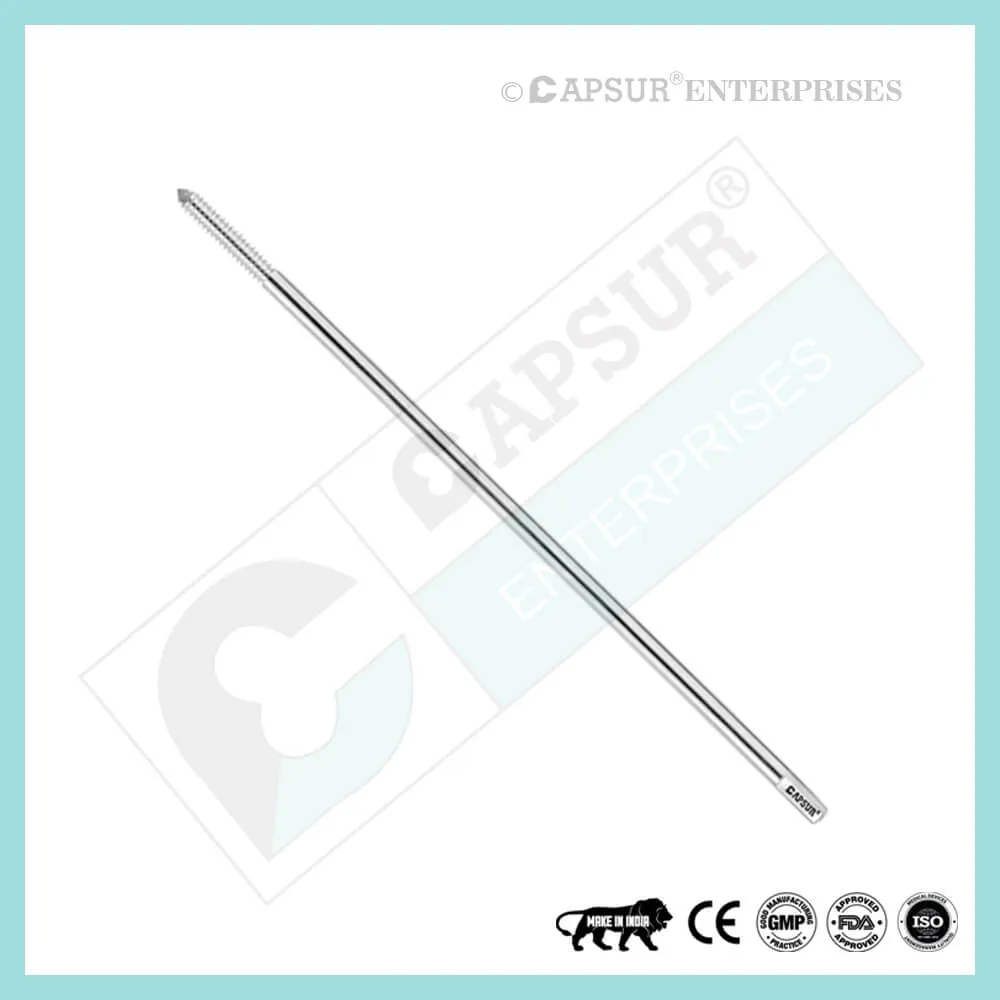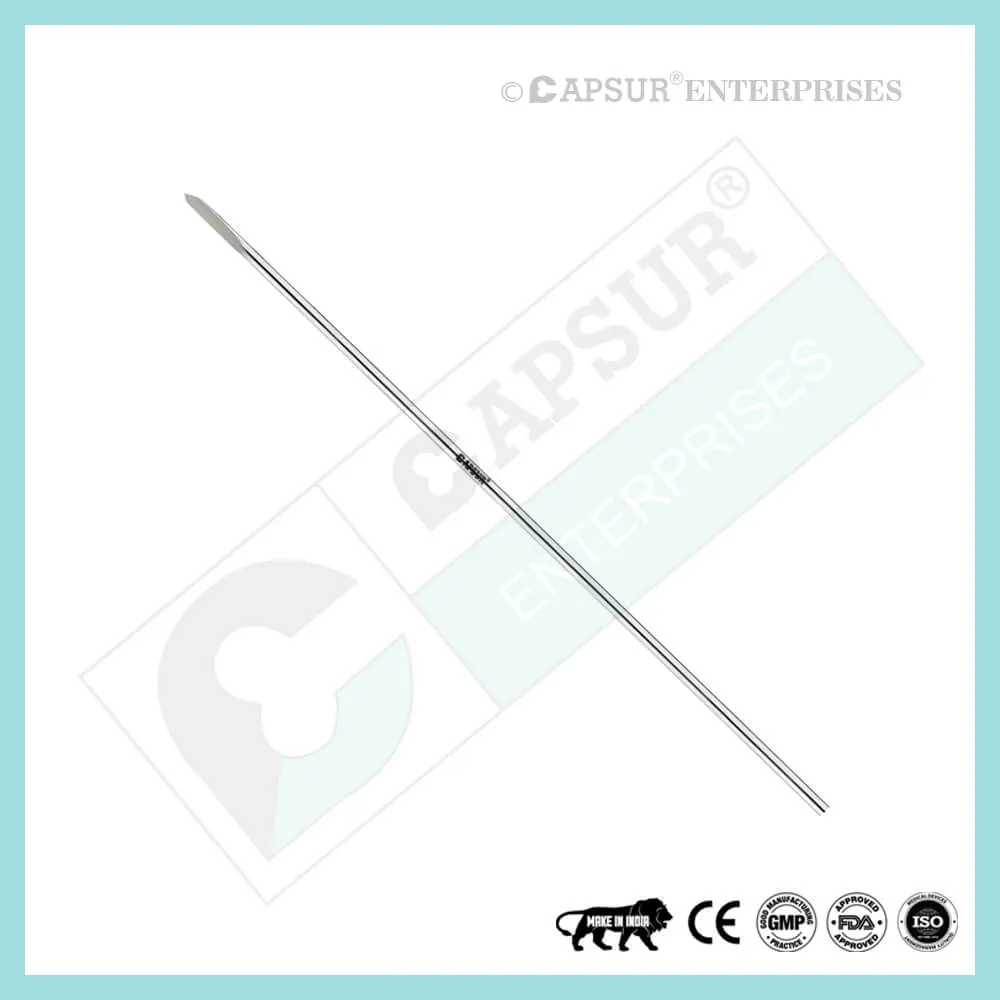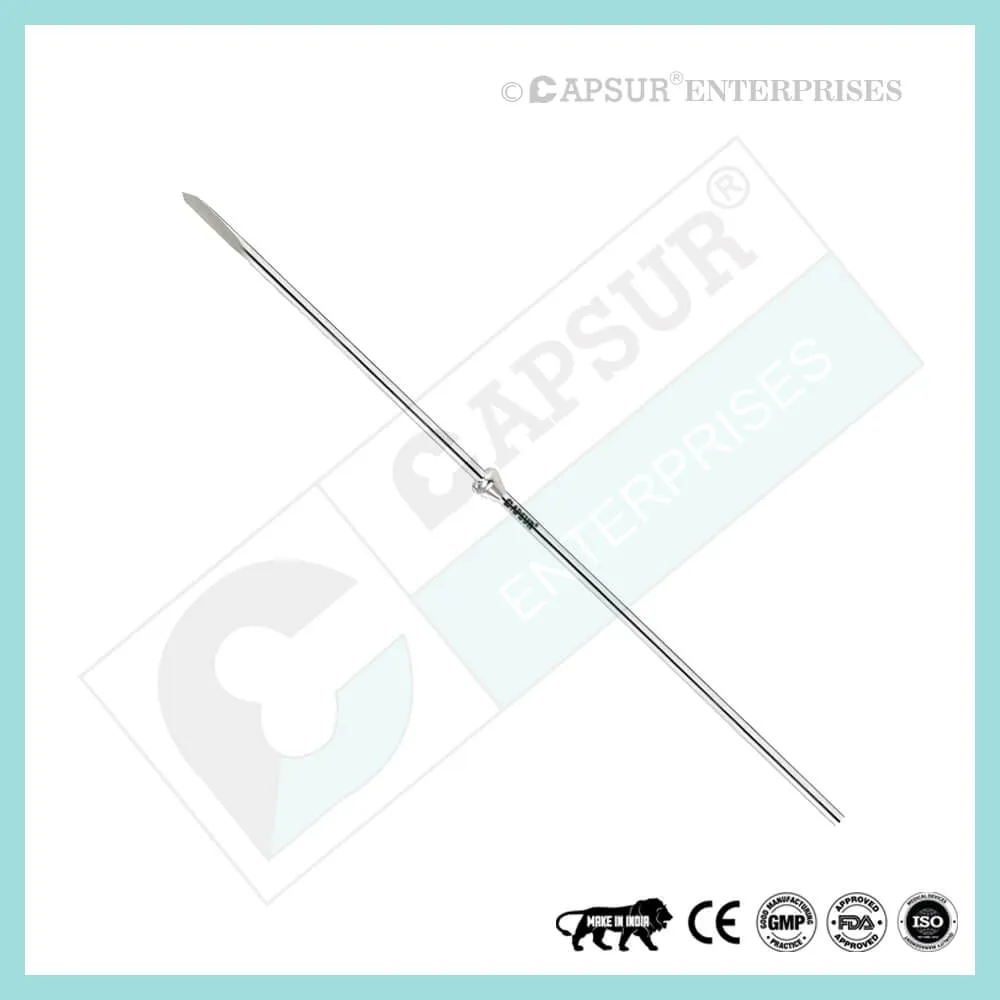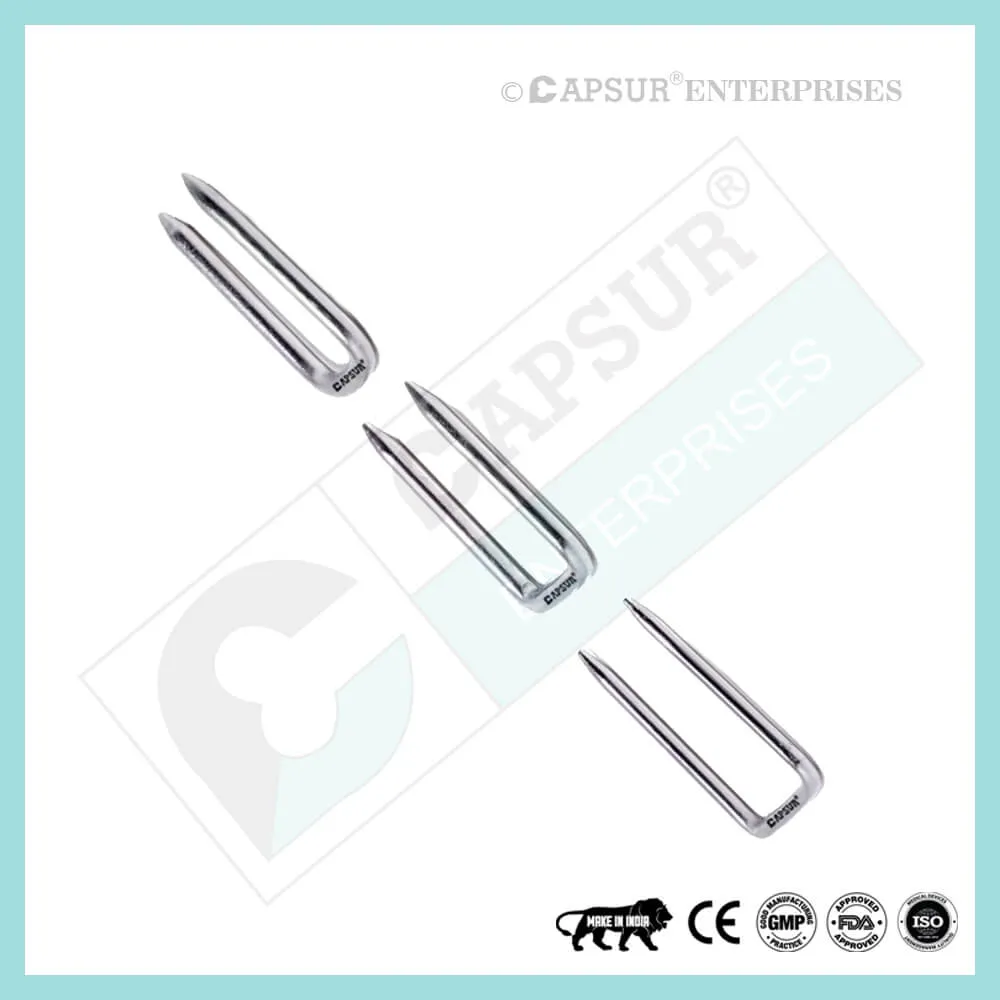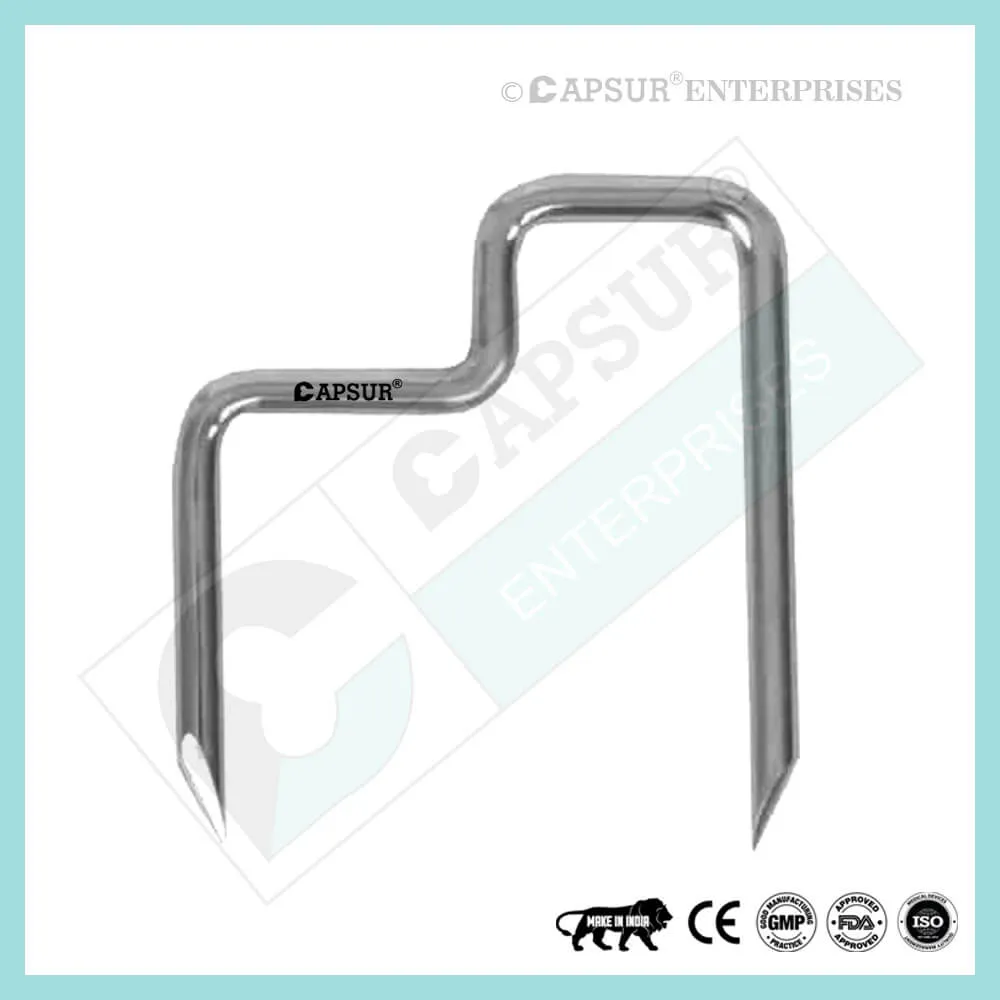Model No: 124433-A12
- Best Quality
- Affordable Pricing
- On-Time Delivery
- Customer Satisfaction
Specification of Suture Wire / Cerclage Wire
After an operation or injury, suture wire is used to hold the tissues of the body together. In most cases, application entails stitching the wound closed with a needle and thread.
Suture wire is available in a variety of lengths and diameters. SWG (Standard Wire Gauge) or millimeters are used to measure the diameter of suture wire. SS 316L is the material used to make Vast Ortho Suture Wires.
Suture Wire sizes that are accessible are
- 16 SWG (1.60mm)
- 18 SWG (1.25mm)
- 20 SWG (0.90mm)
- 22 SWG (0.70mm)
- 24 SWG (0.55mm)
- 26 SWG (0.45mm)
- 28 SWG (0.35mm)
- 30 SWG (0.30mm)
Uses of Suture Wire / Cerclage Wire
- Femoral fractures can be stabilized with suture wire and then further strengthened with a nail or plate. The procedure is associated with excellent results with no significant side effects, and the minimally invasive technique and instrumentation provide the advantage of minimal soft tissue dissection.
- fixation and stabilization of the proximal femur in cases of subtrochanteric fractures, periprosthetic femur fractures, or as a preventative banding in total joint hip replacement.
- acetabular fractures and patellar fractures
- Dislocation of the acromioclavicular joint
- In the past, femoral fracture osteosynthesis has been accomplished using suture wire. Although periosteal stripping and extensive soft tissue dissection increased the risk of bone necrosis and delayed union, the technique lost favor. The introduction of new technology and minimally invasive techniques has greatly decreased these complications. Despite the few applications for which it is currently approved, reduction and stabilization with cerclage wiring can support osteosynthesis, particularly in spiral or oblique fracture morphology or those with a butterfly fragment rather than interfragmentary screw fixation.
Other Important Info of Suture Wire / Cerclage Wire
Suture Wire techniques
Suture Wire methods come in a wide variety. Among them are:
- enduring sutures
With this method, a single strand of suture material is stitched repeatedly. Since tension is evenly distributed throughout the continuous suture strand, this type of suture can be applied quickly and is also strong.
- ruptured sutures
This suture method closes the wound by using multiple strands of suture material. The material is cut and tied off after a stitch is made. This method results in a wound that is tightly closed. The remaining stitches will continue to hold the wound together even if one of them breaks.
- thick sutures
This kind of suture is inserted deep beneath the skin, between layers of tissue. They could be uninterrupted or stop and start. Fascial layers are frequently closed with this stitch.
- hidden sutures
When using this kind of suture, the knot is placed inside, either underneath or inside the area that needs to be sealed off. When using large sutures deeper inside the body, this kind of suture is helpful because it is typically not removed.
- handkerchief stitches
This kind of continuous suture is applied all around and pulled tight just like a bag’s drawstring. An intestinal stapling device, for instance, might be secured in your intestines using this kind of suture.
- Sutures under the skin
The dermis, the tissue layer beneath the top layer of your skin, is where these sutures are inserted. Short stitches are positioned parallel to your wound in a line. Following that, the stitches are secured at either end of the wound.
Suture Wire removal
The location of your suture wires on your body will determine when they are removed. Here are some general principles:
- scalp: 7 to 10 days
- face: 3 to 5 days
- chest or trunk: 10 to 14 days
- arms: 7 to 10 days
- legs: 10 to 14 days
- hands or feet: 10 to 14 days
- palms of hands or soles of feet: 14 to 21 days
Your medical professional will sterilize the area before removing your suture wires. In an effort to cut your suture as closely to your skin as possible, they will pick up one end and cut it. They will then carefully remove the suture strand.
The broken Suture Wire
Suture Wire encounters hostile conditions inside the body. Although the use of austenitic stainless steel wires has largely eliminated the issues of electrochemical corrosion, direct chemical attack on the suture, and inflammation produced in response to the suture, failure of the wires may still occur due to mechano-chemical cracking, the combined effect of insignificant stresses, typically from cold working, and insignificant chemical potentials produced by body fluids. Despite the two spectacular complications of a broken wire, stainless steel suture wire continues to be a suitable material for sternotomy closure or for reattaching costal cartilages. This highlights the need for caution when using wire sutures. The least amount of bending, twisting, kinking, and knotting should be used.
Suture Wire General Techniques
Suture wire is used to hold fragments in place by encircling them and applying tension to the wire. Hemi-cerclage wires are inserted through holes in the bone to stabilize nearby fragments, while full cerclage wires completely encircle the bone. Although hemi-cerclage techniques are discussed in many textbooks, it is best to avoid using them when treating most fractures. When placed, it offers poor stability between fragments and has the potential to seriously harm both the blood supply and the fragments themselves.
There are two ways to tighten suture wires. The ends of the wire can be equally wound around one another to create a “twist wire.” An alternative is a wire with a loop at one end that can be passed through to tighten the wire around the bone. There are wire tighteners made especially for twist and looped suture wires. The surgeon is strongly cautioned against taking this short cut even though it is possible to tighten suture wires without the assistance of these wire tighteners. A wire tightener can apply much more tension than can be done by hand, so skipping out on one is a waste of money. The wire must be tight in order for suture wire application to be successful. Which Suture Wire design—twisted or looped—is preferred? These variations are somewhat based on personal preference, and they do not significantly affect surgical success. Twisted wires are better at securing knots, according to research, but looped Suture Wires consistently produce more tension and fragment stability.
Suture Wires are the most frequently mishandled orthopedic hardware and are a major cause of postoperative complications, despite the fact that they can be useful in the repair of fractures. A loose wire near a fracture site is essentially poison to the environment where the bone is healing. The vascular buds working to revascularize and heal the fracture are destroyed as the loose wire swings back and forth. The end result is a non-union, no healing, and no blood supply. The following guidelines must be strictly followed in order to successfully use suture wires:
- The wire needs to be snug!
- The wire’s diameter must be adequate for the specific application. Choose a wire that is too heavy rather than one that is too light as a safety precaution.
- Suture Wires are never the only method of stabilizing a fracture.
- The long axis of the bone must be perpendicular to the placement of the wires.
- Always use multiple wires. Use at least two, preferably more, at all times.
- The correct wire spacing must be observed. They must be positioned roughly 1 cm apart and at least 1/2 cm away from the fracture ends. If rules #5 and #6 cannot be fulfilled simultaneously, the fracture cannot be fixed with wires.
- Fragments must be anatomically reduced and the overall fracture repair must be designed to completely eliminate the possibility of fracture collapse if wires are used to stabilize a fracture. For instance, if there is a chance that one fragment will shift and cause the collapse of the other adjacent fragments, a comminuted fracture might not be suitable for wire fixation. A mass of avascular bone fragments surrounded by frayed wires from such an incident would be a disaster waiting to happen!
Suture Wire Risk Factor
When assessing the prognosis in each case, contraindications—which may be partial or complete—must be taken into account. Under the following circumstances, alternative management strategies may need to be taken into account:
- infections that are systemic or local, acute or chronic.
- either localized, systemic, or chronic inflammation.
- serve as a dangerous vascular, nervous, or muscular disease.
- Bone defects that would prevent the implant from being properly anchored.
- All associated illnesses that might jeopardize the implant’s success and functionality.
Warnings and Precautionary for Suture Wire
The surgeon and support staff should read the safety instructions in this document as well as any product-specific information in the product description, surgical techniques, and/or brochures before using Suture Wire.
Suture Wire is made with medical-grade materials and is carefully designed, built, and produced. If used properly, these high-quality Wire ensure the best working outcomes. As a result, the usage guidelines and safety advice below must be followed.
Suture Wire misuse can result in injury to the operator, patients, or other people as well as tissue damage, premature wear and tear, instrument destruction, and instrument destruction.
The operating surgeon must actively participate in the medical care of their patients. The surgeon must have a complete understanding of the instruments, their limitations, and the surgical procedure. The surgeon and the surgical team are responsible for exercising caution in the selection and use of surgical instruments. Before using implants, adequate surgical training should be obtained.
Factors that could harm the operation’s success include:
- allergies to materials implanted.
- regional bone tumors.
- osteomalacia or osteoporosis.
- metabolic disturbances and systemic disease.
- drug and alcohol abuse.
- Excessive shock-producing physical activity that exposes the implant to blows and/or heavy loads.
- Patients who lack the mental capacity to comprehend and follow instructions from a doctor.
- Unhealthy overall.
- Potential Negative Effects
- The most frequent side effects following implantation are as follows:
- Loosening of the Wire, which may be brought on by the implant’s tissue reaction or by the fixation site’s repeated loading.
- the two stages of infection.
- additional bone fracture brought on by abnormal stress or weakened bone structure.
- a hematoma or pressure-related pressure that causes temporary or permanent neural damage.
- Hematomas from wounds and slow wound healing.
- Venous thrombosis, pulmonary embolism, and cardiac arrest are examples of vascular disease.
- heterotopically ossifying.
- Due to the suture wire’s presence, there is pain and discomfort.
- Implant mechanical failure, such as bending, loosening, or breakage.
- Implant migration leading to injury.
Preoperative Planning for Suture Wire
Following a thorough clinical evaluation of the patient, the operation is planned. X-rays are also necessary to provide a clear picture of the bony anatomy and any associated deformities. The appropriate implantation tools and a full size of suture wire must be on hand at the time of the procedure.
The potential risks and complications related to the use of implants should be discussed with the patient by the clinician. If the patient has allergies to any of the implant materials, it is crucial to know this before surgery. Additionally, the patient needs to be made aware that the device’s performance cannot be guaranteed because problems may reduce its lifespan.
Suture Wire Precautions
During reprocessing, verify that the instruments are functional and look for wear. Before using, replace any worn-out or broken instruments.
It is advised to use the tools designated for this Wire.
Use caution when handling equipment, and put used bone-cutting tools in a sharps container.
Always use suction and irrigation to remove any debris that may be produced during implantation or removal.
Suture Wire Warnings
When put through excessive force, suture wire has the potential to break while in use. We advise that the broken part be removed whenever possible and practical for the particular patient, though the surgeon will ultimately decide whether to do so based on the risk involved. Be aware that implants lack the natural bone’s strength. Significant loads may cause implants to fail.
The user’s glove or skin may be pinched or torn by the sharp edges or moving joints of some instruments, screws, and cut plates.
Be sure to get rid of any fragments that weren’t fixed during surgery.
While the surgeon will ultimately decide whether to remove the implant, we advise that fixation devices be taken out as soon as it is safe and practical for the specific patient and after their purpose as a healing aid has been fulfilled. To prevent refracture, suture wire removal should be followed by adequate post-operative management.
Suture Wire General Adverse Events
There are risks, side effects, and adverse events associated with all major surgical procedures. While there are many possible reactions, the following are some of the most frequent ones: issues related to anesthesia and patient positioning (such as nausea, vomiting, dental injuries, neurological impairments, etc.), thrombosis, embolism, infection, damage to nerve and/or tooth roots or other critical structures, such as blood vessels, excessive bleeding, damage to soft tissues, including swelling, abnormal scar formation, functional impairment of the musculoskeletal system, and pain.
| Suture Wire / Cerclage Wire |
|---|


